How companies should send emails: A Developer Look
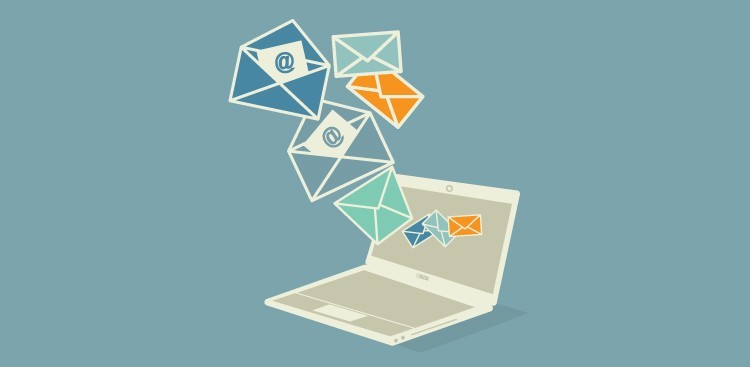
Andrei Rebrov, Technical Director of Scentbird, wrote an article in his Medium English blog on Medium, explaining what mistakes companies make when working with mailings . We have highlighted the main points of this article.
What does the developers
At the beginning of the article, Rebrov answers the obvious question - why is the topic of mailing lists being touched on in the startup technical director’s blog? The answer is very simple:
')
The essence of email marketing is not to send X letters, attract Y customers and get bored with Z of them. It's all about the data: where, to whom, why, why send these letters and in what quantity. Developers can collect and analyze all the necessary data on the company's customers and create a system that will send emails at the right time with the right theme and a clear call to action.
In real life, many companies are wrong approach to solving this problem. The result of this can be seen in the Spam folder of the average network user. Most likely, it looks like this:
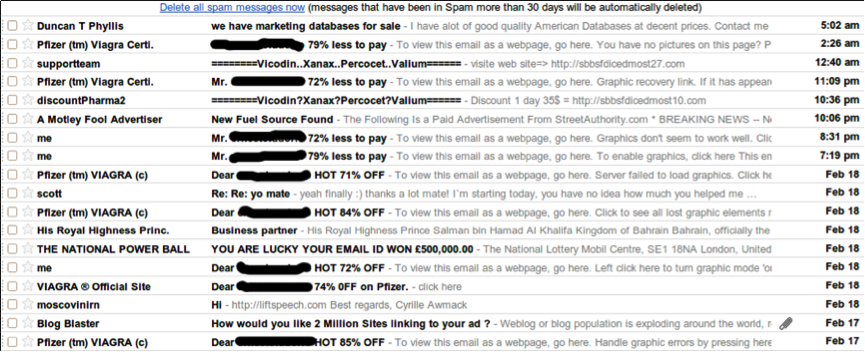
Spam, dubious offers, huge discounts, etc. Every day, people get a bunch of meaningless emails. That is why Rebrov suggests first to deal with a general understanding of email marketing strategy.
There are two types of emails (mailings): mass and transactional [here and below, the author understands transactional and trigger mailing as transactional letters - approx. trans.].
Bulk emails:
- Promotions
- Discounts
- New features
- etc.
Trigger letters
- Abandoned basket
- Abandoned Subscription Page
- Offers with updates
- etc.
In other words, during mass distribution, we send the same message to a large group of clients, and trigger letters, as a rule, use unique and personalized content.
Mass mailing
The current state of the industry of email marketing developer illustrates the legend of the golden antelope. According to legend, in ancient times, a boy lived in India who saved an antelope, capable of making gold from sparks by hoofs. One day, a greedy Raj caught them and asked the antelope to gold it. The antelope agreed, but on one condition - if Rajah says “Enough”, then all the coins will turn into shards. But he just laughed and started shouting “More, more, more!”. He shouted until he was drowned in gold. As you can guess, right after that, Raja said “Enough” and died. A story with a happy ending.

According to the author of the material, some companies adhere to the same approach when sending emails. They see that X letters attracts Y customers and decide that they need to send more. But this approach does not work well in the long run. In the end, all these letters "turn into shards," as people begin to unsubscribe, mark them as spam, put filters or just ignore them.
Segmentation
There are several rules to help avoid this. First, it is necessary to carry out market segmentation. Rebrov lists some of the segmentation criteria that the Scentbird command uses:
- How e-mail is received;
- Region / time zone;
- Is the user a company subscriber or not;
- How long has the user been a customer of the company;
- Letter opening rate;
- ...
How to receive an email - you can receive an email address in various ways: as part of user registration on the website, through practical jokes, from partners. You should not buy email addresses for several reasons:
- You cannot check in advance the quality of this database and the accuracy of the addresses indicated in it.
- Mail servers can limit the bulk mailing of letters and reduce the level of trust in the company.
- The service you use may request information about the source of these email addresses (for example, Scentbird employees received such a request from Amazon SES).
Region / time zone is not a secret that people check email more often at certain times of the day. Therefore, if you work in several time zones, it is probably important for you that all letters be delivered at the same time [taking into account the time zone].
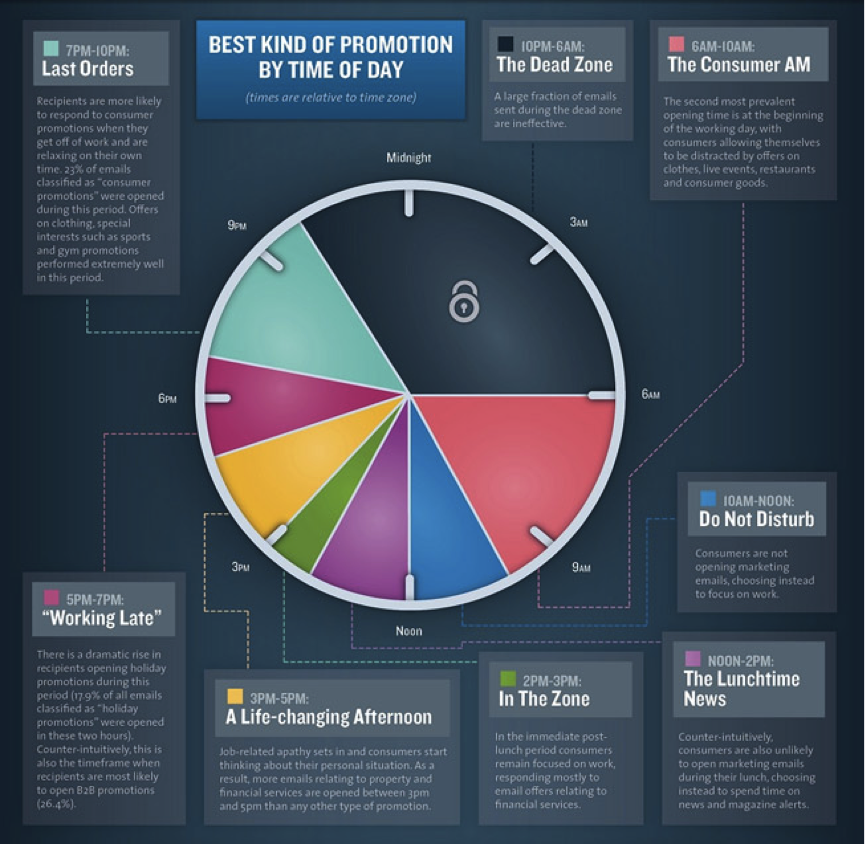
Source: Kissmetrics
19: 00–22: 00 - email recipients are most disposed to respond to promotions in their spare time after work
22: 00–06: 00 - dead zone, letters sent at this time are ineffective
06: 00–10: 00 - the second “effective” time zone for distribution - at the beginning of the working day, users allow themselves to be distracted by letters
10: 00–12: 00 - “do not disturb” - recipients are focused on work
12: 00–14: 00 - recipients rarely read mailings during lunch, preferring to spend this time on news and articles
14: 00–15: 00 - users are still focused on work and have little interest in mailings
15: 00–17: 00 - users start to get bored at work - mailings have a chance
17: 00–19: 00 - users are most willing to respond to letters on B2B-shares and travel offers
Whether the user is a subscriber or not - believe me, you will not want to find yourself in a situation where users who are already your customers receive a better deal than the one they used.
How long has a user been a client - we are talking about loyalty and a higher LTV (from English. Lifetime Value - “lifetime customer value” - the company's total profit received from one client for the entire period of cooperation with him). It is likely that users of this category (with a higher LTV) will be more open to various commercial offers.
The opening rate of letters is another criterion that may affect the level of trust in you. Some email providers detect when messages from the same address do not open for a long time, and automatically start marking them as spam.
Rebrov also recommends adding segmentation criteria that are specific to the business of a particular company in order to increase the overall effectiveness of mailings.
Email quality
The second topic touched by Scentbird's technical director is the quality of the letter itself. It is not only about the text of the letter, but also about other things, such as:
- Content;
- Image size;
- Markup;
- Broken links;
- Suspicious links;
- Digital signature;
- Domain trust;
- ...
Content — A typical example of machine learning is spam detection. If the e-mail contains phrases such as “Limited Offer”, “Unique opportunity”, “Expand your business”, etc., most likely, it will go to spam.
Image size - some marketers love to send beautiful high-resolution images, but most users view mail from their phones and usually don’t have LTE or wi-fi.
Layout - You need to be careful when working with services that create letters from the PSD template, breaking the image into many individual elements. This is a good start, but when things go uphill, find someone who will do the HTML layout. Moreover, some mobiles do not upload images “for security reasons”. Rebrov recalls that when he had a phone on Windows, it was terribly annoying.
Broken and suspicious links - every time you send a message, you should check the links. If the mail provider detects a broken link, it may cause blocking of the letter. In addition, each domain that is used for distribution should be verified.
Digital signature - most often people forget about this simple thing. You need to configure SPF or DKIM – signature for letters sent via the company's mail service. It only takes 5 minutes, but it will be very useful.
Trust in the domain - employees of the company should periodically check if their domain / IP is not in one of the “black lists”, most of which can be found here. As a rule, if the domain is on the “black list”, then it remains possible to apply to the administration with a request to exclude it.
Trigger letters
The person who coined the term “trigger letters” very successfully chose the name (from English trigger - the trigger). With their help, the company can hit its target, or at least “touch” it.

Walter PPK, James Bond Weapon
So, before you send the right trigger letter, you should collect data about users, find out what they do on the site, and what is the current state of the stream of customers.
Suppose a company is engaged in e-commerce. People go to her site, browse product pages, add something to the cart, and finally place an order. The company's goal is to bring customers to the last stage and return them to the funnel, if at some point they left it.
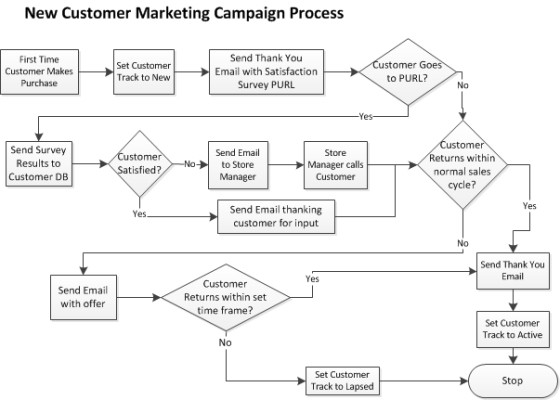
Source: Boilers76
All trigger letters can be divided into two groups:
- E-mails that are sent after a certain event occurs (invoices for payment, payment notification, etc.);
- emails that are designed to return customers (abandoned baskets, invitations from Facebook, etc.).
The second group eventually became drip email marketing.
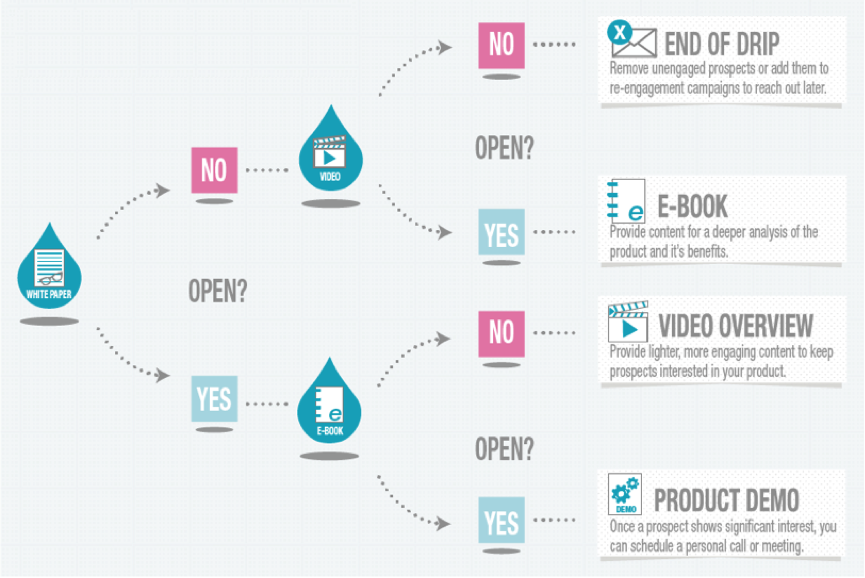
An example of building a marketing campaign "drip irrigation." Source: Zapier
How is it done? The company wants the client to do something, for example, subscribe to its service. To do this, employees of the company begin to send him emails with a certain frequency. As a rule, in one of these letters he is offered or given a discount, because it is better to lose some money than a client.
The technical implementation is simple:
- you need to define a condition that helps identify the clients to whom you want to send letters, and form a SQL query.
- create a task (scheduled for execution on a schedule) that will execute the SQL query and send letters
- mark people who have already been sent letters to not send them the same message again in case the task is interrupted.
Some tips:
- make sure you can stop and restart the tasks individually in case you need to pause the campaign for any reason.
- changing the task execution schedule for each mailing should be simple, so that you do not have to redeploy the application each time
- tasks must be separated from your main application, as they have a different life cycle
- It’s better to work with Mandrill (or any other service) in an independent application and work with it through queues (for example through Amazon SQS) because the calls in Mandrill are synchronous, and if you try to send 50 thousand emails, your application will work eternity
- For the same reason, it is better to have two queues - one for regular trigger letters (confirmation of registration, password recovery), and another for drip letters, because they are sent in large numbers, and their processing takes a lot of time.
Difficulty arises when a client unsubscribes from receiving trigger letters, while you still want to send him important letters (such as bills for payment) and do not want to send a drop list. In this case, use the webhook mechanism, which is in almost all services. Again, if the user unsubscribes from the "drop" list, do not forget to unsubscribe it from the mass mailings.
Conclusion: general recommendations
- Use separate domains for triggering / mass mailing - this will help you to provide the necessary level of trust for each group of mailings;
- Apply A / B – testing - do not forget to test various options for the topics and text of letters, as well as distribution time;
- Control the mailing list - you should monitor the frequency of sending, the level of conversion and the deliverability of letters;
- Invest time and money in quality - this is your channel for attracting new customers, take it responsibly;
- Treat mailing as a final product.
Other materials on the subject of email marketing from Pechkina :
- How to design a mailing list that is not annoying: 10 simple tips
- Analysis of email messages in 18 years: Unsuccessful time travel experiment
- How to send an email using Python: a guide for dummies
- Interfaces: How not to do the option of unsubscribing from the email-list
- What should be the email-list, and why users unsubscribe from them
Source: https://habr.com/ru/post/302122/
All Articles